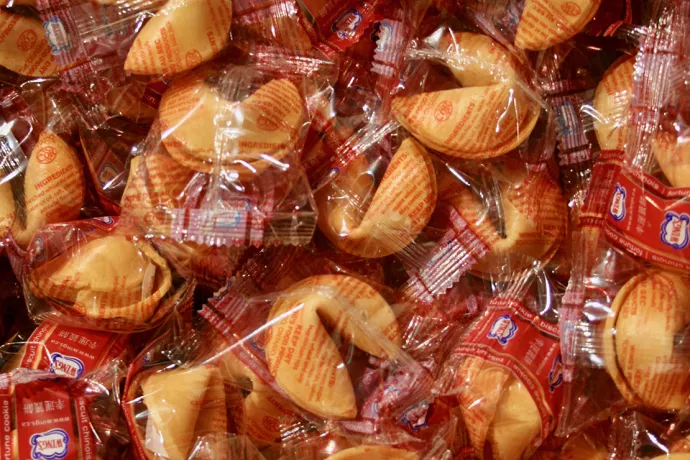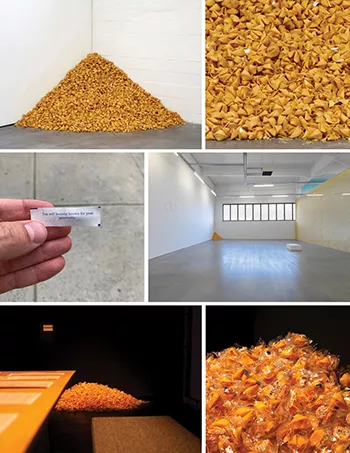
UTM professor merges the ethical and aesthetic in edible art project
If you were to happen across a pile of fortune cookies, heaped in the corner of your apartment lobby, say, and totally free for the taking, would you help yourself to one? We could all certainly use some positivity in our outlook right now. And who doesn’t like a cookie? Still, the proposition gives pause — especially today.
The late Cuban-born American conceptual artist Felix Gonzalez-Torres (1957-1996) is perhaps best known for such projects — stacks of printed paper and mounds of confections that invite the visitor to complete the artwork by depleting it. The first of his famous candy piles was installed at Massimo Audiello Gallery in New York City in 1990. It was comprised entirely of fortune cookies.

Thirty years after its first appearance, and in response to the global pandemic, co-representatives of the artist’s estate Andrea Rosen Gallery and David Zwirner are presenting the largest-ever showing of Gonzalez-Torres’ work by inviting 1,000 people around the world to install Untitled (Fortune Cookie Corner).
John Paul Ricco, a professor in the Department of Visual Studies at University of Toronto Mississauga who has written about ethics in art and dedicates a chapter of his 2014 book The Decision Between Us to the work of Gonzalez-Torres, has been invited to participate. Invitees who choose to take part install a pile of between 240 and 1,000 fortune cookies in a place of their deciding on May 25. Halfway through the exhibition, on June 14, the pile will be replenished to its original number. The show will conclude on July 5, at which time any leftover cookies will no longer be considered the work of Gonzalez-Torres.
On Monday, Ricco installed 1,000 fortune cookies, sourced with help from his favourite restaurant in Chinatown, in the lobby of the downtown Toronto condo building where he lives, free to take for residents and their visitors passing by.
Ricco is interested in the way aesthetic decisions are also ethical decisions, such as allowing people to take a cookie from the pile, and ethical decisions are aesthetic (the choice of location of the pile). In such works by Gonzalez-Torres, the aesthetic and ethical “sort of collapse” into each other and become inextricable.
He’s also interested in how such works, enlivened by the participation of viewers, testify to the resilience of social collectivity, especially now. “If there’s a way, in which a work of art like this can make people a little bit more conscious that even though everyone is holed up in their apartments most of the time, there is still a collective community here, even as we try to avoid each other … then I think it’s doing something tremendous,” Ricco says.
Gonzalez-Torres’ candy piles were conceived during another public health crisis, the AIDS epidemic, which is the disease the artist died from at age 38. Ricco sees themes in the artwork that applied then and apply still now.
“I think it has a lot to do with relations to those you don’t know,” he says. “To the stranger, to the anonymous, the foreign, in the sense of who else is engaging with the work, who else has taken. In doing that, are you then implicating yourself in something? And then all these prohibitions and taboos having to do with touch, putting things in your mouth and proximity to others.
“Back then, as now, it’s getting people to think about loss and death by the diminishment of the pile.” But also, regeneration and care, too.
